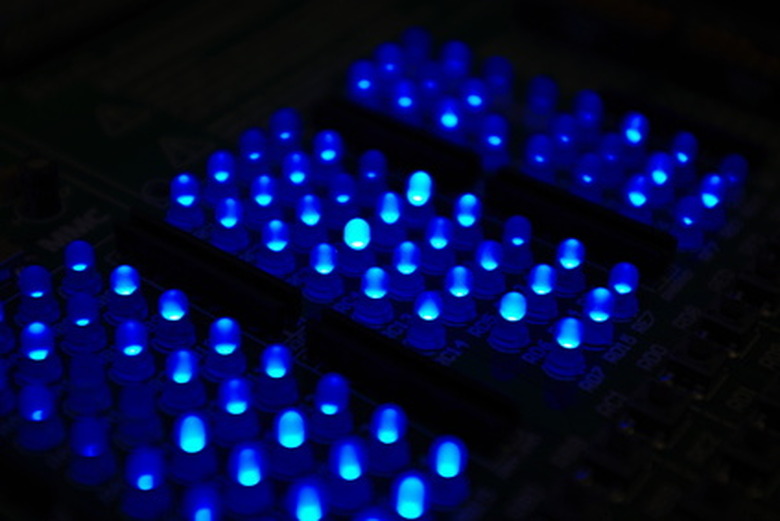Blue Vs. Red LED Grow Lights
Plant leaves have photoreceptors which transform light waves into sugars and starches for food, a process called photosynthesis. While sunlight supplies the full color spectrum, plants primarily use the red and blue wavelengths. Plants grown indoors under various artificial lighting bulbs received the full spectrum until blue and red light-emitting diodes (LEDs) were used to successfully grow plants in the space shuttle early in the 21st century. LEDs offer several advantages over old grow light systems.
Indoor Plant History
Humans have grown plants indoors for thousands of years, from the Egyptians to European explorers, to Victorians with their solariums. For most of this time, the only light plants got was from the sun pouring through door openings or windows. Electric lights enabled plants to grow even in homes with little light. Starting with incandescent bulbs in the 1900's, other grow lights were introduced from florescent bulbs to sodium and metal halide lights.
- Plant leaves have photoreceptors which transform light waves into sugars and starches for food, a process called photosynthesis.
- Starting with incandescent bulbs in the 1900's, other grow lights were introduced from florescent bulbs to sodium and metal halide lights.
Photosynthesis
Plants are the only organisms able to produce their own food from light. They also clean the air and turn carbon dioxide into oxygen, but their photosynthetic ability has been studied for centuries, particularly as indoor commercial greenhouse operations increased.
Photoreceptors
Charles Darwin observed how a plant's first leaf would respond to sunlight by curving toward its rays. Further studies with different wavelengths showed plants respond to the red and blue bands, but according to David Trinklein, horticulturalist at the University of Missouri, leaves get little energy from the yellow and green rays of the visible spectrum.
Red and Blue Wavelengths
Plants use the blue spectrum to stimulate early growth. Blue light also affects flower and fruit preparation and production, but blue light alone produces short plants of a dark color. Red light induces higher but softer growth and stimulates fuller leaf growth. Red light is ideal to maintain healthy mature plants. Plants require more rays from the red range than from the blue for balanced growth. Plant grow lights have traditionally supplied the full color spectrum.
- Plants are the only organisms able to produce their own food from light.
- Blue light also affects flower and fruit preparation and production, but blue light alone produces short plants of a dark color.
LED Grow Lights
The ability to concentrate grow lights in specific wavelengths came with the popularization of LED lights in the 21st century. These low wattage, high intensity lights had been used in the red wavelength for displays on clocks and household appliances. Individualizing colors in LED lights for Christmas displays was a breakthrough for greenhouses and indoor gardeners. LED grow lights in red or blue and in combination gives gardeners the ability to maximize plant growth at all stages of the life cycle.
